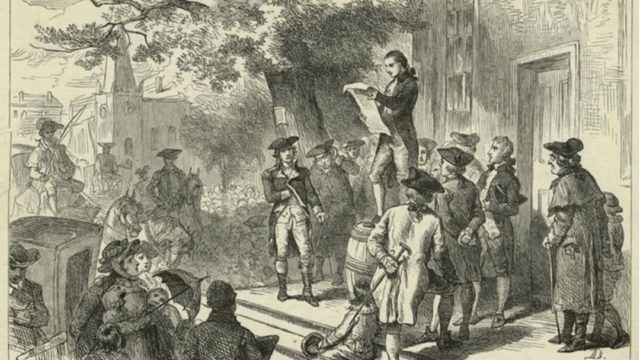This post was written by Jennifer Wilson, Program and Policy Director from League of Women Voters New York as part of our PowHer the Vote 2017 campaign.
Every 20 years New York State voters have an opportunity to call a constitutional convention. Unlike other states that can pass amendments on the ballot via referendum, New Yorker’s can call for a full constitutional convention that allows delegates, elected by voters, to propose constitutional changes. After the Convention ends, voters will decide whether we accept or reject the proposed changes. New York has had 9 convention since 1777.
Conventions traditionally produce very positive reforms that are reflective of the issues the public is facing during that time. For example, during the depressionary era, the 1938 convention produced protections for needy populations as well as rights for workers. These included the right to unionize, workers compensation, and constitutionally guaranteed pensions for state employees. Housing guarantees and a safety net for the needy were also added to the Constitution at this time.
Earlier conventions have given New Yorkers the Forever Wild clause, SUNY and CUNY, and the equal protection clause. Typically the amendments are proposed in separate packages and not as a single proposal. The most recent convention in 1967 was mandated by a Supreme Court ruling which invalidated our apportionment process. This convention was unlike any before. The entire process was highly contention and led delegates to list all the amendments as a single ballot question. This was very atypical and likely won’t happen again.
Convention delegates have never removed anything from our state Constitution, which is part of the reason our Constitution is so large. Our state Constitution is the fourth largest in the country, it’s even larger than the US Constitution! Many of the articles in our Constitution are outdated and confusing. Convention delegates would have an opportunity to clean up the Constitution’s language and strengthen and clarify crucial amendments that protect citizens.
The League of Women Voters supports holding a Constitutional Convention because we believe it is the only way to pass meaningful ethics, voting, and redirecting reforms. It is nearly impossible to get the legislature to pass these type of reforms because it would hurt their chance of being re-elected.
Since the last convention question in 1997, the legislature has not passed a single voting reform and has only passed ethics reforms on the heels of major public scandals. This includes the second ballot proposal on pension forfeiture for public officers convicted of duty related felonies, which was passed after the federal indictment of the leaders of the Assembly and Senate. Since 2000, more than 33 state officials have stepped down or been forcibly removed from office due to accusations, and in some cases convictions, for crimes they committed while in office. This is unacceptable!
In addition to ethics and voting reforms, redistricting could be tackled during a convention. Much like voting and ethics, the legislature does not want to change this constitutional statute that helps get them elected through carefully drawn districts. The current redistricting process, which is decided by a so called Independent Commission, is woefully inadequate and has led to a severely gerrymandered state body.
These are just three of the areas we would like to see improved. The scope of change is unlimited but ultimately voters will decide whether we accept or reject these amendments.
Get educated on the convention process, history, pros and cons, and potential issues with our “Get The Facts” Brochure.
Also be sure to get educated on the other two ballot proposals you will be voting on.


